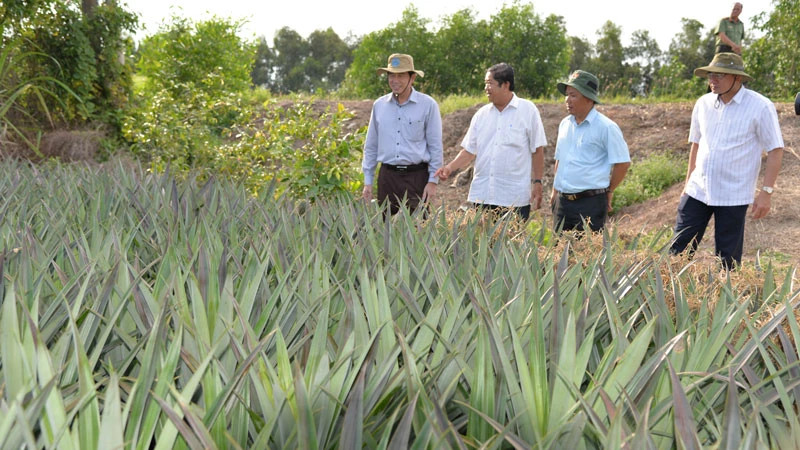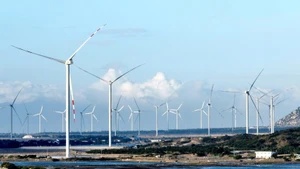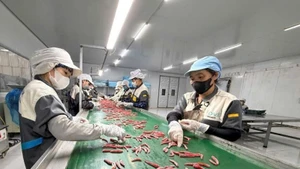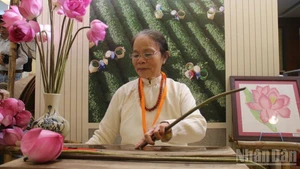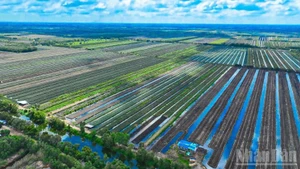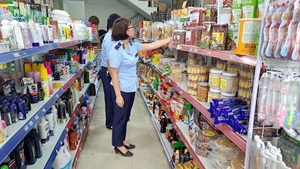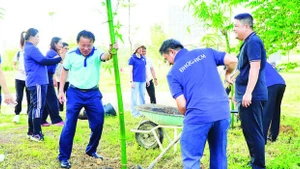Over the years, Tan Phuoc BMF pineapple agricultural cooperative, Hung Thanh commune, Tan Phuoc district, Tien Giang province has gathered resources to conduct research to help farmers prevent pests and new technologies to increase the value of pineapples in Tien Giang province.
Tan Phuoc district is a low-lying area of Tien Giang province. The soil here is quite suitable for growing pineapples and taro. However, the cultivation process of the above two crops by the majority of farmers still follows old practices, so the use of fertilizers and pesticides is unscientific. This causes waste and environmental pollution.
In addition, pineapple seedlings are left by farmers from previous crops or purchased from floating sources, so the quality is uneven. The degeneration of the variety has greatly affected the productivity and quality of the crop. As a result, the pineapple produced is sold to traders at a low price.
Realising these limitations, Chairman of the Board of Directors and Director of Tan Phuoc BMF Pineapple Agricultural Cooperative Nguyen Tien Dat and his partners established the cooperative at the end of 2023.
Currently, the cooperative has 9 members with high qualifications in agriculture. The cooperative has a human resource that is mostly young, dynamic and well-trained, with the desire to contribute and enrich themselves and the locality.
Dat said that the cooperative determined to focus on developing pineapple trees in Tan Phuoc land. Therefore, from the early days of its establishment, the cooperative has conducted surveys and research to help pineapple trees grow well and achieve high productivity, helping farmers maximize profits.
Through the survey, the cooperative recorded the red leaf disease on pineapple plants caused by wilt bacteria and other factors such as soil, seedlings and nematodes. From there, the cooperative has developed a treatment plan for farmers to solve the problem of this “difficult to treat” disease.
 |
| Traditional pineapple growing process of farmers in Phuoc Lap 1 commune, Tan Phuoc district, Tien Giang province. |
The one-hectare pineapple garden of Mr. Huynh Thanh Tien, residing in Hung Dien hamlet, Hung Thanh commune, Tan Phuoc district, Tien Giang province previously suffered from red leaf disease. Tien treated the disease by guessing based on experience, thinking that the plants were infected with mealybugs and wilt bacteria.
However, after using preventive and treatment drugs, the pineapple plant’s condition did not improve. Therefore, Tien asked for the support of cooperative staff to determine the cause of the disease and find a solution.
Taking us on a tour of his family’s pineapple garden, Tien confided: “Through the survey, the cooperative staff discovered that my pineapple field had red leaf tips not due to wilt bacteria but due to nematodes.
Since then, these staff have regularly visited the field and provided treatment drugs. After 30-40 days, my pineapple garden has changed in a positive direction. The pineapple shoots turned green again and were no longer red.”
Since its establishment, Tan Phuoc BMF pineapple agricultural cooperative has boldly researched and applied science and technology to production; cooperated with Ho Chi Minh City University of Agriculture and Forestry to access new scientific and technical advances.
In addition, the cooperative has initially accessed international investment channels to have funding to research and improve farming processes, moving towards producing clean products to meet export standards.
According to Dat, the cooperative has currently researched and successfully applied the pineapple cultivation process to achieve high productivity, increasing by about 25% compared to traditional production.
This helps pineapple growers increase economic efficiency. In addition, the cooperative has also researched and developed processed products from pineapples of type 3 and 4 to increase added value. Accordingly, the cooperative has researched and produced many value-added products such as: Extracting Bromelain enzyme used in cooking to help soften fast food, pineapple juice with spirulina with high nutritional content, extracting the aroma from pineapple to produce scented wax.
Currently, the cooperative is building the Queen pineapple parent tree, establishing the F0 generation with 49 Queen pineapple trees.
It is expected that in 1.5 years, the cooperative will complete the process to apply for certification of the parent pineapple tree. In addition, the cooperative also coordinates with experts and agencies to carry out scientific projects focusing on the production and preservation of pineapples after harvest.
The research project on preserving MD2 pineapples and the Queen pineapple sub-component is being carried out by the cooperative in coordination with the International University. When completed, the project will provide a new technological solution for gas preservation to help extend the preservation time of MD2 pineapples by about 40-45 days and is expected to reach 60 days. For Queen pineapples, it can reach 30 days when applying the technology.
Mr. Nguyen Tien Dat affirmed: “The cooperative’s research is aimed at applied research, not basic research. The research aims to be used to increase the value of pineapples when completed.”
